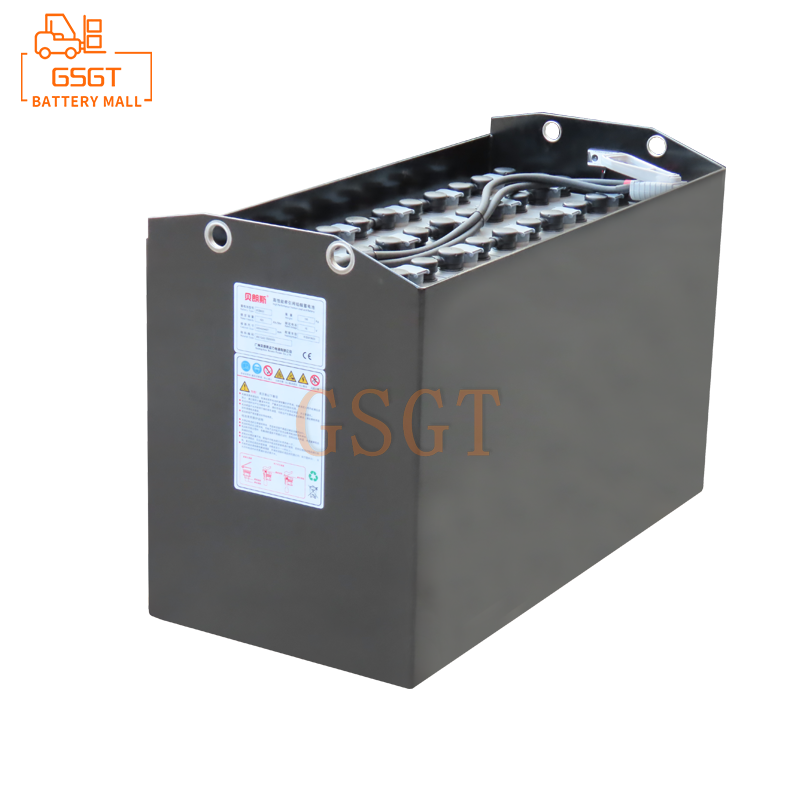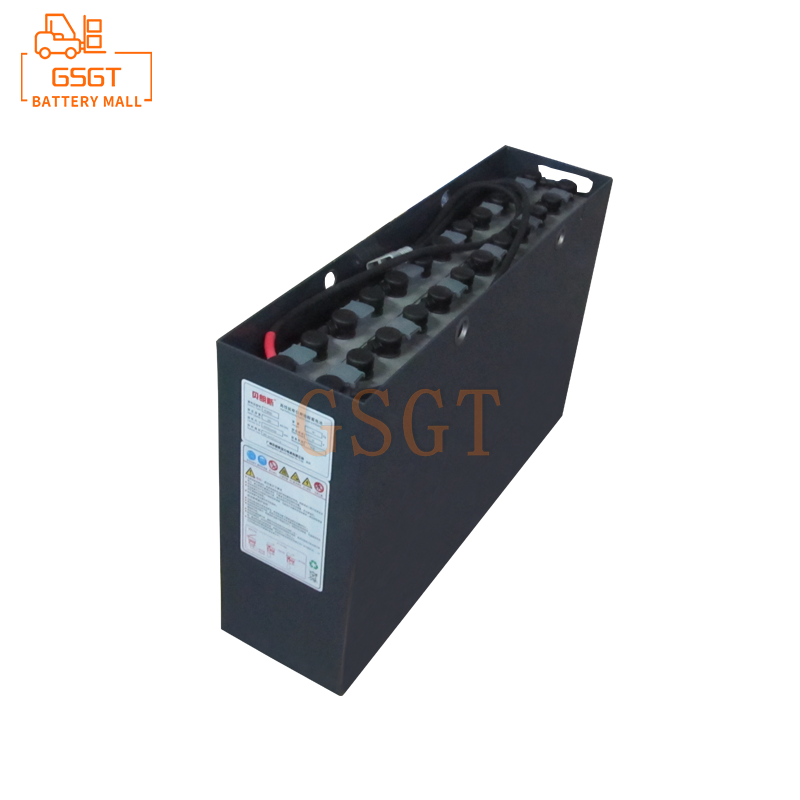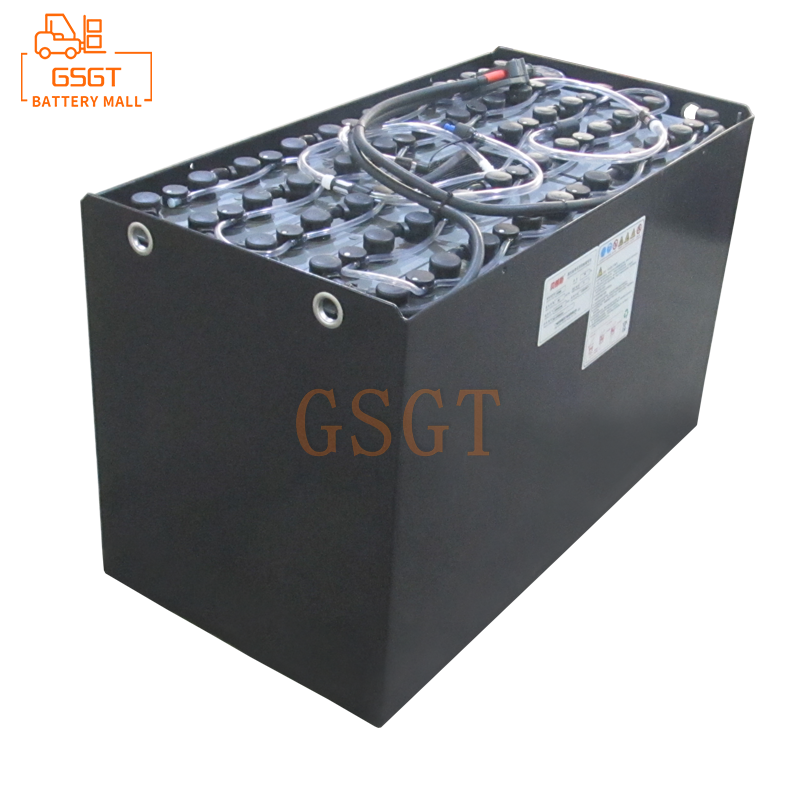Time:2025-05-26 10:45:56
Browse:600
In the modern logistics and warehousing industry, forklifts are indispensable and important equipment, undertaking heavy tasks such as goods handling and loading/unloading. The performance and service life of the lead-acid battery, the power core of a forklift, largely depend on whether the charging process is scientific and standardized. Incorrect charging operations not only reduce the capacity and performance of the battery, shorten its service life, but may even cause safety accidents. Therefore, a thorough understanding and strict compliance with the charging precautions for forklift lead-acid batteries are of great significance for ensuring the efficient operation of forklifts, reducing operating costs, and guaranteeing operational safety. The following will provide a comprehensive review of the charging precautions for forklift lead-acid batteries from multiple aspects, including preparations before charging, operation norms during charging, maintenance after charging, and handling of special circumstances.
1. Preparations before charging
(1) Check the appearance and condition of the battery
Before charging the lead-acid battery of the forklift, a detailed inspection of its appearance should be conducted first. Check whether the battery casing is damaged or cracked. Once the casing is found to be damaged, stop using it immediately and replace it. The damaged casing may cause the internal electrolyte to leak, which not only corrodes the forklift components but also may lead to serious problems such as short circuits. At the same time, check whether the terminals of the battery are corroded or loose. If the terminal is corroded, it can be cleaned with a dedicated terminal cleaner or sodium bicarbonate solution. After cleaning, dry it with a clean cloth and apply an appropriate amount of Vaseline or special anti-corrosion grease to prevent further corrosion. If the terminal is loose, it needs to be tightened with an appropriate tool to ensure a firm connection and avoid sparks caused by poor contact during charging, which may lead to safety hazards.
In addition, the electrolyte level inside the battery also needs to be checked. Most lead-acid batteries are equipped with liquid level observation Windows, through which it can be determined whether the electrolyte is within the specified liquid level range. Under normal circumstances, the electrolyte level should be between the upper and lower limits of the liquid level line. If the liquid level is too low, distilled water or special lead-acid battery replenishment liquid should be added. Do not add tap water, as the minerals and impurities in tap water will affect the performance of the electrolyte and thereby shorten the service life of the battery. When adding, it should be done slowly to avoid the electrolyte overflowing.
(2) Confirm the charging equipment and the environment
When choosing charging equipment, make sure that the specifications of the charger match the lead-acid battery of the forklift. The charging voltage and current required for batteries of different models and capacities vary. Using an unmatched charger may lead to undercharging or overcharging. For example, using a charger with an excessively high voltage may cause the battery to heat up severely and accelerate the aging of the plates. If the current is too small, it will prolong the charging time and affect the working efficiency. Therefore, be sure to read the instructions of the battery and the charger carefully to confirm whether the parameters of the two match.
At the same time, the choice of charging environment is also of vital importance. The charging area should be well-ventilated to avoid charging in a confined space. This is because lead-acid batteries produce gases such as hydrogen and oxygen during the charging process. Hydrogen is a flammable and explosive gas. When the concentration of hydrogen in the air reaches a certain proportion, it is very likely to explode upon encountering an open flame or spark. In addition, the temperature of the charging environment should also be appropriate. The ideal charging temperature range is generally between 5℃ and 35℃. Too low a temperature will reduce the activity of the electrolyte, leading to a decline in charging efficiency. It may even cause ice to form inside the battery, damaging the plates. Excessively high temperatures will accelerate the evaporation of the electrolyte and the corrosion of the plates, affecting the performance and lifespan of the battery. If the ambient temperature exceeds the appropriate range, corresponding cooling or heating measures should be taken, such as using air conditioners to cool down in hot weather and heating equipment to raise the ambient temperature in cold weather. However, it is necessary to avoid direct contact of the heating equipment with the battery.
(3) Clean the surface of the forklift and the battery
Before charging, it is also necessary to clean the surfaces of the forklift and the battery. During the daily operation of forklifts, they may be contaminated with dust, oil stains and other debris. These debris may enter the battery and affect its performance. Use a clean damp cloth to wipe the surface of the forklift and the battery to remove dust and oil stains. For stubborn stains, neutral detergent can be used for cleaning, but be careful not to let the detergent enter the battery interior. At the same time, clean the metal particles and conductive substances on the surface of the battery to prevent these substances from forming conductive paths on the battery surface, causing self-discharge and reducing the battery's power storage capacity.
2. Operating Norms during the Charging Process
(1) Connect the charging circuit correctly
When connecting the charging line, operations must be carried out strictly in the correct sequence. First, connect the output terminal of the charger to the positive and negative terminals of the battery correctly. Usually, the red terminal corresponds to the positive terminal and the black terminal to the negative terminal. Make sure the connection is firm to avoid poor contact. Then, insert the input end of the charger into the power socket. When disconnecting the charging circuit, the sequence is reversed. First, unplug the power plug of the charger, and then disconnect the charger from the battery. Such an operation sequence can effectively prevent sparks from being generated when connecting or disconnecting lines, thus avoiding the occurrence of fire or explosion accidents.
At the same time, when connecting the charging lines, insulated tools should be used to avoid manual operation and prevent electric shock accidents. If any damage or exposure of the charging circuit is found, its use should be stopped immediately and a new charging circuit should be replaced to ensure the safety of the charging process.
(2) Monitor the charging process
During the charging process, real-time monitoring of the charging status is required. Observe the indicator lights and display screen of the charger to understand whether the parameters such as charging voltage, current and charging time are normal. Generally speaking, at the beginning of charging, the charging current is relatively large. As the battery is gradually fully charged, the charging current will gradually decrease and the charging voltage will gradually increase. If abnormal fluctuations in current or voltage are detected during the charging process, such as a sudden increase or decrease in current, or excessively high or low voltage, charging should be stopped immediately. Check whether there are any faults in the charger, charging circuit, or battery.
In addition, attention should also be paid to the temperature changes of the battery. Under normal charging conditions, the battery will generate a certain degree of heat, but the temperature should not be too high. If the surface temperature of the battery exceeds 50℃ during the charging process, charging should be suspended and resumed only after the temperature drops. Excessively high temperatures may lead to problems such as excessive evaporation of the electrolyte and deformation of the plates, seriously affecting the service life of the battery. The temperature of the battery can be monitored by using an infrared thermometer or by touching (be careful of burns).
(3) Avoid overcharging and undercharging
Both overcharging and undercharging can cause damage to the lead-acid batteries of forklifts. Overcharging can cause intense chemical reactions inside the battery, generating a large amount of heat and gas, accelerating the aging and corrosion of the plates, and also leading to excessive consumption of the electrolyte, shortening the service life of the battery. Undercharging will cause sulfation of the battery plates, reducing the capacity and performance of the battery. Therefore, the charging time should be strictly controlled. Based on the capacity of the battery and the charging efficiency of the charger, the charging time should be reasonably estimated. Generally speaking, charging can be stopped when the charger indicates that the battery is fully charged or when the charging current drops to the specified trickle charging current.
In addition, some chargers have an automatic power-off function. When the battery is fully charged, the charger will automatically stop charging. Such chargers can effectively prevent overcharging. However, even when using this kind of charger, one cannot rely entirely on its automatic function. It is still necessary to regularly check the charging status to ensure that the charging process is normal.
3. Maintenance work after charging
(1) Check the liquid level and density of the electrolyte
After the charging is completed, wait for the battery to cool down to room temperature and check the electrolyte level again. If the liquid level drops, distilled water or special supplementary liquid can be added appropriately to restore the liquid level to the specified range. Meanwhile, the density of the electrolyte is measured using a hydrometer. Under normal circumstances, the density of the electrolyte in lead-acid batteries is between 1.28 and 1.30g/cm³. If the density of the electrolyte is too low, it may be caused by excessive discharge or insufficient charging of the battery. If the density is too high, it might be caused by an excessively long charging time or excessive evaporation of water in the electrolyte. Based on the measurement results, adjust the charging method appropriately or replenish distilled water to maintain the normal density of the electrolyte.
(2) Cleaning and Maintenance
After the charging is completed, clean the battery and charging equipment again. Use a clean damp cloth to wipe the surface of the battery to remove the electrolyte stains and dust that may be produced during the charging process. Check the plug, socket and circuit of the charger to ensure there is no damage or corrosion. For chargers that are not used for a long time, they should be stored in a dry and well-ventilated place to avoid moisture damage.
At the same time, inspect and maintain the terminals of the battery. If oxidation occurs at the terminals, clean them according to the methods introduced earlier and apply anti-corrosion grease. In addition, it is also necessary to check whether the fixing device of the battery is firm to ensure that during the operation of the forklift, the battery will not loosen or shift due to vibration, which would affect its performance and safety.
(3) Storage Precautions
If the lead-acid battery of a forklift needs to be stored for a long time, it should be fully charged first, and then recharged at regular intervals (generally half a month to one month) to prevent self-discharge of the battery and subsequent battery depletion. The storage environment should be kept dry, cool and well-ventilated, avoiding direct sunlight and damp conditions. If conditions permit, the battery can be removed from the forklift and stored separately. This can better control the storage environment and reduce the impact of external factors on the battery. Before reusing the stored battery, a comprehensive inspection should be carried out on it, including its appearance, electrolyte level, voltage, etc., to ensure its normal performance.
4. Handling of Special Circumstances
(1) Charging in low-temperature environments
In low-temperature environments, the activity of the electrolyte in lead-acid batteries decreases, and the difficulty of charging increases. To ensure the charging effect, preheating measures can be taken. For example, move the battery to a warm room and place it for a period of time until its temperature rises before charging. Or use a charger with low-temperature charging function. Such a charger can automatically adjust the charging parameters and provide the battery with appropriate charging voltage and current in a low-temperature environment.
In addition, when charging in a low-temperature environment, the charging time should be appropriately extended, as low temperatures can lead to a decrease in charging efficiency. At the same time, closely monitor the temperature changes of the battery to prevent ice formation inside the battery during the charging process. If the battery temperature is found to be too low or there is ice formation, charging should be stopped immediately and appropriate warming measures should be taken. Charging can be resumed only after the battery temperature returns to normal.
(2) Charging in high-temperature environments
Charging in a high-temperature environment can cause the battery to heat up easily, accelerating the aging of the plates and the evaporation of the electrolyte. Therefore, when charging in hot weather, it is necessary to choose a well-ventilated and cool place. If necessary, fans and other equipment can be used to assist in cooling. At the same time, reduce the charging current and extend the charging time to prevent the battery temperature from being too high due to excessive charging current.
If the battery temperature exceeds the specified range during the charging process, charging should be immediately suspended and resumed only after the temperature drops. In addition, in high-temperature environments, the electrolyte level should be checked more frequently, and distilled water should be replenished in a timely manner to prevent excessive evaporation of the electrolyte.
(3) Handling of Battery Faults
If any malfunction of the battery is detected during the charging process, such as a swollen casing, smoke, or abnormal odor, charging should be stopped immediately and the power supply cut off promptly. Move the faulty battery to a safe area to prevent fire or explosion accidents at the charging site. At the same time, contact professional maintenance personnel to inspect and repair the battery. Do not disassemble or handle the faulty battery by yourself to avoid danger.
In daily use, it is necessary to regularly inspect and maintain the battery, promptly identify potential problems and handle them to prevent minor issues from developing into major malfunctions and affecting the normal operation of the forklift.
To sum up, the charging process of forklift lead-acid batteries involves multiple steps, and each step has its specific precautions. Only by strictly following these precautions, from the preparation before charging, the operation norms during the charging process, to the maintenance after charging and the handling of special circumstances, can the performance and service life of lead-acid batteries be ensured, the efficient and safe operation of forklifts be guaranteed, and reliable power support be provided for the logistics and warehousing operations of enterprises.

$2450

$1060

$3050

$5710

MESSAGE
Professional And Efficient
Security
Affordable Price
Professional Services